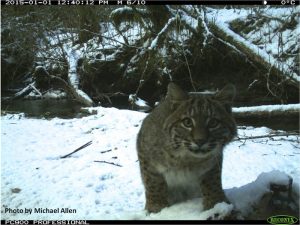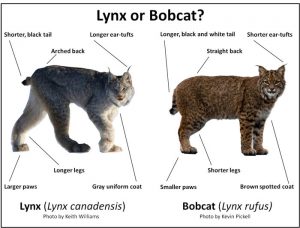
The range in which bobcats roam in B.C. is seemingly changing, at least according to one researcher.
TJ Gooliaff is a BIT (Biologist in Training) student at the University of British Columbia Okanagan, also paired with B.C.’s Ministry of Environment, who is collecting photos of bobcats and lynx.
Ultimately, he is studying the effects climate change has made on the roaming patterns of each species.
His goal, he says, is to map the distribution of each species throughout the province.
“Response has been great,” says Gooliaff. “I’ve received over 3,000 photos from all across the province.”
Historically, bobcats and lynx have been separated by snow depth, he says.

Lynx, found in the boreal forests across Canada and Alaska and the mountain ranges to the south, have extremely long legs and large snowshoe-like paws, making them well adapted for traveling across deep snow. Gooliaff says they are typically found at higher elevations.
In contrast, he says bobcats are heavier, have small feet and sink into the snow. They are typically found throughout the deserts and grasslands of the US and southern Canada. In most cases, bobcats are found at lower elevations.
However, climate change has led to an earlier spring and lower snow levels in western North America, according to Gooliaff, and as a result, suitable bobcat habitat may now be present in new areas of B.C.
“There have been some surprises,” says Gooliaff. “Bobcats have been detected much farther north than I expected, even in the Cariboo and Omineca regions.”
These findings match Gooliaff’s earlier hypothesis — which states bobcats have moved northwards and into higher elevations, while Lynx may also have pushed into higher elevations to keep up with the declining snow.
“I would be surprised if there are any bobcats in the Robson Valley but there are some not too far south around Clearwater,” says Gooliaff. “However, there should be lots of lynx in that country.”
As his study draws to a close, Gooliaff is doing one final push for photo submissions from the public.
The photos will be used only to collect species information and location, says Gooliaff, not for management decisions such as hunting and trapping bag limits or season dates.
Photographers will retain ownership of their photos, and they will not be shared without permission. The results of the study will be shared with all those who are interested, says Gooliaff.
Photos can be sent to [email protected].



